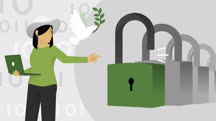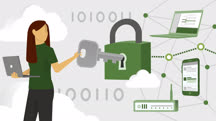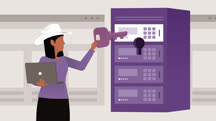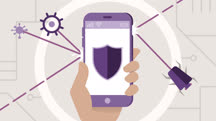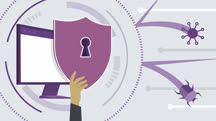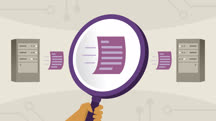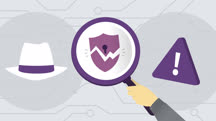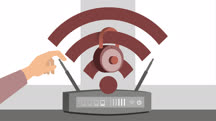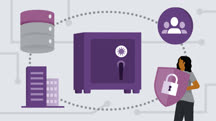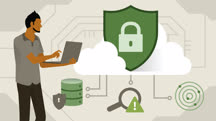Course catalog
Categories
Showing 101-120 of 212 items.
Ethical Hacking: Cryptography
Learn about the basic principles of cryptography and the most popular algorithms (and how they're used), as well as attack strategies and methodologies.
Ethical Hacking: Denial of Service
Prepare for the Certified Ethical Hacker exam. Learn about the most common types of denial-of-service (DoS) attacks and discover strategies to mitigate them.
Ethical Hacking: Enumeration
Learn how to enumerate protocols, processes, and services on Windows and Linux machines, and study for the Certified Ethical Hacker exam.
Ethical Hacking: Evading IDS, Firewalls, and Honeypots
Take your first steps into testing client defenses. Learn about firewalls, network simulation using GNS3, special-purpose perimeter devices, and intrusion response techniques.
Ethical Hacking: Footprinting and Reconnaissance
Learn the concepts, tools, and techniques behind footprinting: ethical hacking techniques for finding information about computers and the people they belong to.
Ethical Hacking: Hacking IoT Devices
Find out how to make IoT devices more secure by learning about the technologies and protocols used and how to implement countermeasures to address vulnerabilities.
Ethical Hacking: Hacking Web Servers and Web Applications
Find out how to test websites and web applications and prevent cyberattacks like SQL injections and cross-site scripting exploits.
Ethical Hacking: Introduction to Ethical Hacking
What is ethical hacking? Get an overview of the principles of ethical hacking and the techniques and tools used by the white hat hacker.
Ethical Hacking: Mobile Devices and Platforms
Learn how to secure your organization's mobile devices and test iOS and Android applications for security flaws—key topics on the Certified Ethical Hacker exam.
Ethical Hacking: Penetration Testing
The only way to know your systems are secure is to test them. Learn how to use penetration testing to check for vulnerabilities in computers, networks, applications, email, and people.
Ethical Hacking: Scanning Networks
Become an ethical hacker. Learn how to detect network vulnerabilities through scanning, and use tools and techniques for evading IDS detection, concealing, spoofing, and tunneling.
Ethical Hacking: Session Hijacking
Learn what session hijacking is, which protocols are vulnerable, and detect and shore up vulnerabilities in your systems.
Ethical Hacking: Sniffers
Hackers use sniffing to intercept network traffic. Learn about how ethical hackers prevent these types of attacks in this course from our Certified Ethical Hacker exam series.
Ethical Hacking: Social Engineering
Prevent identity theft and network intrusion by hackers. Learn what social engineering is, who is being targeted, and how attacks are orchestrated.
Ethical Hacking: The Complete Malware Analysis Process
Learn how to detect, analyze, and defeat different types of malware, from viruses and worms to Trojans and backdoors.
Ethical Hacking: Vulnerability Analysis
Manage risk by assessing vulnerabilities. Learn about the processes, methodologies, and tools you need to find and address weaknesses that attackers might exploit.
Ethical Hacking: Wireless Networks
IT security professionals: Learn how to identify and repair vulnerabilities in your wireless networks. This course is part of our Certified Ethical Hacker test prep series.
Firewall Administration Essential Training
Learn how to plan for, install, and administer a network firewall. Explore how firewalls help to secure traffic, and get tips for building a secure network barrier of your own.
Implementing a Privacy, Risk, and Assurance Program
Learn all about today's privacy landscape as you discover how to design a cross-functional privacy program.
Implementing and Administering Azure Sentinel
Learn how to implement and administer Azure Sentinel, a cloud-native security event and information management (SEIM) system that detects threats while automating threat responses.
